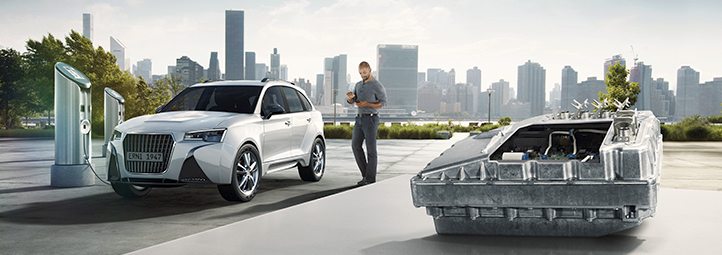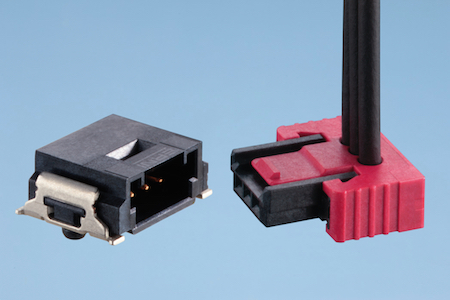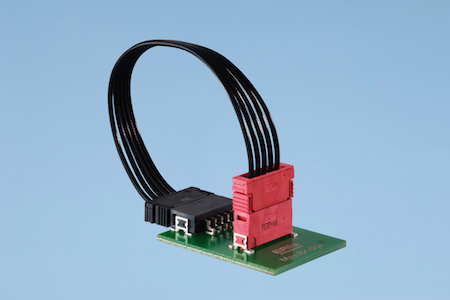The Increasing Importance of Rugged Automotive Interconnects
Rugged automotive interconnects are essential for the reliable operation of automotive battery management and power delivery systems
Kevin Oursler, US – Director Marketing and Business Development at ERNI Electronics, Inc.
Automotive battery management systems (BMSs) continue to progress in complexity and storage capacity, challenged by architecture and interconnectivity solutions that require ruggedization and reliability criteria over the life of the vehicle. Power train components, including inverters and amplifiers, are also placing peripheral demands on energy consumption throughout hybrid electric, plug-in hybrid electric, and full-electric vehicle (HEV, PHEV, and FEV) drive systems. Stringent electromechanical requirements and diverse architectures can be met with new connectivity offerings designed with rugged interfaces ideal for automotive applications.

BMS and CMC Systems
Energy availability and the functional reliability of battery storage systems are — via two primary subsystems — the responsibility of a vehicle’s BMS. Battery management controllers (BMCs) act as the central vehicle interface unit. BMCs communicate with various other systems that demand energy, as well as monitor the health of the batteries, and rely on connectivity to govern, maintain, and communicate when variables exceed their respective margins. Like BMCs, cell management controllers (CMCs) focus on reliability and monitoring, but within individual battery packs. CMCs communicate variables to and from BMCs for analysis on a broader scale, encompassing other subsystems that require energy for vehicle operation. The efficient monitoring of key operational parameters, such as charging and discharging, voltage levels, individual cell performance, and protection if faults are detected, is dependent upon reliable interfaces both within the system (e.g., battery cells) and external to other dependent components. So, prolonging battery life is a primary function of both BMCs and CMCs, which effectively protect batteries from the damage that could be caused by variations harmful to individual battery cells, as well as the overall system.
The Importance of Interconnectivity
The electromechanical power delivery systems within HEVs and FEVs require several features to achieve optimal, operational BMS monitoring, including: high accuracy, reliability, and power carrying capacity, reduced size and weight, and robust resistance to high temperatures, shock, and vibration. Connections between batteries in parallel provide the required current capacity, while series connections enable voltage range for various operations throughout the vehicle systems.
These connections are typically wire-to-board solutions, bus bars, or both, depending on the system’s architecture. Connectors with less bulk resistance produce less heat when operating near their respective current capacity limits, improving both efficiency and accuracy in overall energy management. Likewise, well-designed connector interfaces mitigate connection resistance over time, and through prolonged exposure to environmental elements and temperature swings, improving the reliability and dependability of the connector chosen.
Thermal monitoring throughout the battery is often achieved with wire-to-board solutions that are both reliable and dense (i.e., have a small pin-to-pin pitch), and the monitoring of cells and hot spots within battery packs is generally accomplished with cable solutions that have a thermistor on one end. However, the connection and mating interface to board-mount headers is critical in order for the sensing circuits to function reliably throughout the life of the battery. So, automotive engineers should look for active latching features and strain relief mechanisms that ensure that stresses and high vibrations are distributed over the connector as a whole, rather than solely on the signal and power conductors.
Power Delivery Systems
Inverters and amplifiers in automotive power electronics systems have similar interconnect challenges, but signal density versus power isolation and current derating often results in diverse pitch and electromechanical requirements. Energy flow management and power delivery are two primary functions of inverter subsystems designed to manage various requirements and demands during various states of vehicle operation, including idle, startup, and charging, and well-designed interconnectivity solutions similar to those discussed in the BMS environment are required to effectively and reliably convert this energy to more mechanical outputs. Of course, both high-voltage and more standardized interfaces are coupled to an inverter’s input and output connections, but there are also electronics with medium-high current requirements in these enclosures that demand maximum reliability in minimal space.

Figure 1: ERNI’s 1.27mm-pitch MiniBridge Koshiri connector
Connectors capable of achieving 4A per pin with a minimal pitch — like ERNI’s MiniBridge Koshiri connector, which has a 1.27mm pitch — are ideal for such applications, and more demanding requirements can be supported with slightly larger single- and dual-row offerings capable of achieving up to 12A per conductor, including those found in the 2.54mm-pitch MaxiBridge product family. This offering supports terminal position assurance (TPA) features including secondary locking of the female receptacle to the cable housing to ensure reliable and proper engagement to the board-mount connector interface. Interconnect solutions that offer various color options and physical keying features, with each color offering unique mechanical coding and keying features, can also improve cable and subsystem integration during manufacturing. Additionally, in higher current applications that typically employ bus bars, power element conductors capable of achieving up to 300A per element can act as support devices for enhanced performance. Such high-current single conductor solutions are ideal for terminating bus bars to host boards and subsystems, as well as for reliably terminating bulk wire applications to a PCB via press-fit or SMT attachment options.

Figure 2: ERNI’s 2.54mm-pitch MaxiBridge connector
Further, high-performance connectors for use in automotive BMSs should offer a wide operating temperature range of at least -50°C to 125°C, as well as provide design flexibility and the capacity to meet evolving application requirements, especially regarding miniaturization and weight restrictions. Ruggedized interconnect solutions that offer a number of different pin counts, heights, and configurations, security features like latching mechanisms, and the ability to provide both secure data transmission rates up to 3Gb/s and current carrying capacity up to 1.7A per contact — like ERNI’s 1.27mm SMC line — are ideal for such maximum performance, minimal space automotive inverter applications.
There are many board-to-board and wire-to-board interconnects on the market, but optimal, reliable solutions begin with matching the application requirements to the various physical and performance specifications offered by the target connector technology. Ideally, you should review your specific application needs with the supplier’s applications engineers to qualify questions in detail and ensure that other options are not missed. Doing so will result in maximized, effective interconnect designs that will easily integrate into these complex electrical systems and deliver the high-reliability, long-lifetime performance they demand.





